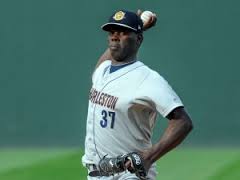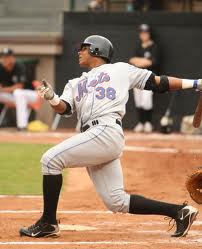Over the next several weeks, The Baseball Haven will be creating season previews for all 30 MLB teams. You’ll find their projected records (based on PECOTA records from Baseball Prospectus, as of 2/15/2015), each team’s top three players (based on Steamer WAR projections from FanGraphs), and some valuable notes on each team, including likely bounce-back candidates, potential breakout players or fantasy sleepers, as well as a look back at offseason transactions which led to each team’s projections. Stop back frequently to see where your favorite team ranks!
Detroit Tigers

2015 Projected Record: 82-80 (1st in AL Central, 12th in MLB)
Manager: Brad Ausmus (90-72 in one season with Detroit)
Top Three Players: 1B Miguel Cabrera (5.3), LHP David Price (4.0), 2B Ian Kinsler (3.8)
Bounce-back Player: SS Jose Iglesias
Iglesias was having a breakout campaign in Boston in 2013 before being traded to the Tigers and crashing down to a .259/.306/.348 triple-slash. Fortunately, he was still able to provide elite-level defense, something that the Tigers didn’t have with Jhonny Peralta manning short. After missing all of 2014 with a stress fracture in his lower leg, the Tigers are hoping for a return to form, but you have to wonder if they’ll be satisfied with the offensive production they received from him in late-2013, or if they’re expecting him to be closer to the .330/.376/.409 that he had with Boston, and if he is capable of defensive wizardry after the leg injury. Still, he doesn’t have the pressure on him to be an elite offensive producer with the lineup around him, so expect some value out of him.

Fantasy Player to Watch: 3B Nick Castellanos
It may just seem like Castellanos has been around forever, but he only has 597 career plate appearances and enters the 2015 season at the age of just 23. At a lanky 6’4″, 210 pounds, the young third baseman will continue to demonstrate a long swing, which will continue to lead to strikeouts, but he has the protection in the order, just like Iglesias, to not be expected to carry the burden of production. Castellanos will never have a .300/.400/.500 season due to his inability to take a pitch, but, if that changes a little and he begins seeing more fastballs, you’ll quickly see an increase in the number of home runs that he can produce. Expect some of those 31 doubles from 2014 to start flying out, as he increases his long-ball total closer to 24 in 2015. He’ll be a top 10 third baseman by the end of the season.
Offseason Overview: Detroit lost their ace, Max Scherzer, to the Washington Nationals via free agency, and complicated their rotation further by dealing Rick Porcello in a deal for OF Yoenis Cespedes. While Cespedes provides ample power for an already potent lineup, the starting rotation took quite a hit, as the club is now without both Scherzer and Porcello, while Doug Fister and Drew Smyly were dealt within the last 15 months. Sure, they added LHP David Price at the deadline last year, but RHP Alfredo Simon (acquired from Cincinnati) and RHP Shane Greene (acquired from the Yankees) have joined Price, RHP Anibal Sanchez, and former superstar-turned-Instagram-hero Justin Verlander in the rotation. In addition to the suddenly impotent (in comparison to one year ago) rotation, the bullpen continues to be an issue. The defense could be a little better, especially with a healthy Iglesias and OF Anthony Gose, a speedy outfielder acquired from Toronto, in the mix, but this isn’t the same group who has won the AL Central the last four seasons.
New #Tigers commercial gets me pumped for the start of a new season. So much history here. Proud to be part of it pic.twitter.com/KI9ktxvfmSâ
â Justin Verlander (@JustinVerlander) March 30, 2015
The Verdict: Detroit continues to reshape their roster into an offensive juggernaut, but rather than having a rotation to match, the Tigers have set themselves up to be quite vulnerable in a very competitive AL Central. The projected 82-80 PECOTA record seems quite conservative for Detroit, and, while they’ll likely finish with at least 85 wins, it likely won’t be enough to win the division. The Tigers don’t have the depth in their minor league system to endure injuries, and they have another year on the arm of Verlander and the body of Cabrera. Even with the tremendous offense, this could be the season that Detroit can’t overcome their consistent lack of depth.
- 2015 Season Preview: Arizona Diamondbacks (3/1/2015)
- 2015 Season Previews: Atlanta Braves (2/28/2015)
- 2015 Season Previews: Baltimore Orioles (3/4/2015)
- 2015 Season Previews: Chicago Cubs (4/1/2015)
- 2015 Season Previews: Chicago White Sox (3/4/2015)
- 2015 Season Previews: Cincinnati Reds (3/11/2015)
- 2015 Season Previews: Colorado Rockies (2/24/2015)
- 2015 Season Previews: Houston Astros (3/1/2015)
- 2015 Season Previews: Kansas City Royals (2/25/2015)
- 2015 Season Previews: Milwaukee Brewers (3/11/2015)
- 2015 Season Previews: Minnesota Twins (2/21/2015)
- 2015 Season Previews: New York Mets (4/1/2015)
- 2015 Season Previews: Philadelphia Phillies (2/20/2015)
- 2015 Season Previews: Pittsburgh Pirates (3/22/2015)
- Season Previews: Miami Marlins (3/25/2015)


























